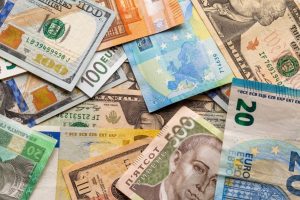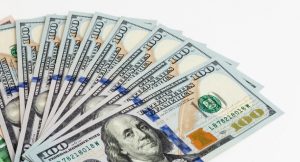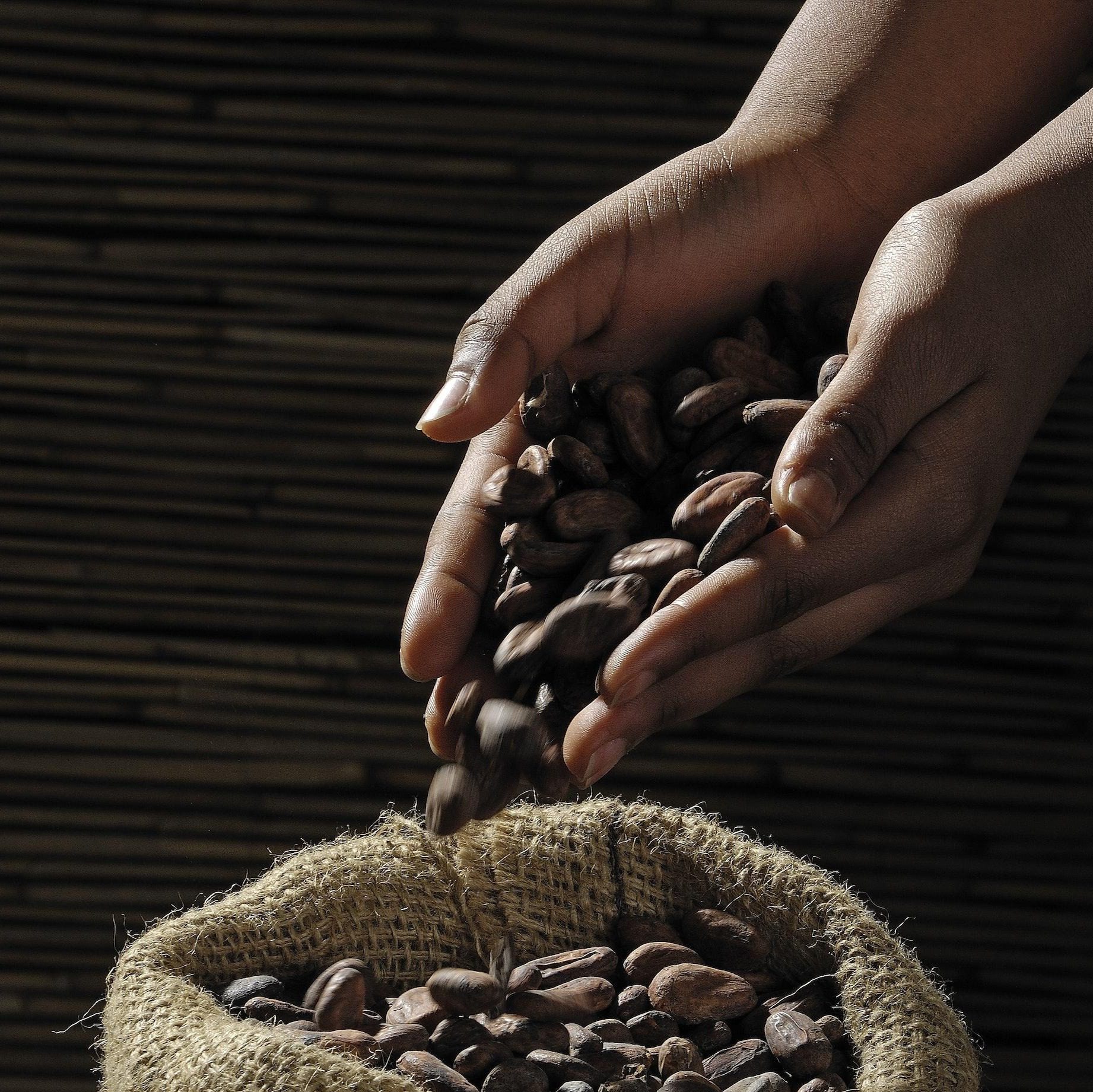STERLING ADVANCES AGAINST DOLLAR, EURO AHEAD OF BOE POLICY ANNOUNCEMENT
The British pound climbed against the dollar on Monday, adding to gains from Friday as the U.S. currency dropped following a weak U.S. jobs report, with the focus on the Bank of England’s impending policy announcement later this week. The pound was last at $1.3306 against the dollar, up 0.2% after a 0.6% gain on Friday. But the currency slid 3.8% last month, its biggest monthly drop since September 2022, on concerns over Britain’s fiscal position and softening economic data. “Narratives are often hard to shake and the mood music around GBP has been glum for some time,” said Kamal Sharma, senior FX strategist at Bank of America. The pound was last up 0.3% at 87 pence per euro. It fell to 87.69 pence last week, its weakest against the single currency since May 2023. Sharma believes the pound will strengthen into year-end against the euro as he expects euro area data to soften, prompting more rate cuts from the European Central Bank. Danske Bank FX strategist Mohamad Al-Saraf held a more bearish view on the pound, expecting the currency to fall to 89 pence per euro in 12 months. “We think the British economy has shown more pronounced signs of weakness, particularly the labour market,” Al-Saraf said. “The relative growth outlook between the UK and the euro area are becoming pound negative.” Attention was turning to the BoE policy announcement on Thursday, with markets pricing in around a 90% chance of a quarter-point rate cut. Traders are pricing in 50 basis points of easing by year-end. With a rate cut almost fully priced, focus for currency traders will be on the outlook for interest rates and whether the central bank could slow the pace at which it shrinks its holdings of government bonds, known as quantitative tightening. “There could be a positive surprise for sterling were the BoE to announce that a lower pace of quantitative tightening … was accompanied by fewer sales of longer-dated Gilts,” said ING head of research Chris Turner.

STERLING FIRMS AGAINST DOLLAR AS MARKETS LOOK TO BOE RATE GUIDANCE
Sterling edged higher against the dollar and fell versus the euro on Tuesday, as traders expect the Bank of England to maintain its rate guidance at this week’s policy meeting. The BoE is widely expected to cut its key interest rate to 4% from 4.25% on Thursday and to lower it once more before the end of the year, despite consumer price inflation rising to close to double the central bank’s 2% target in June. Traders priced in over a 90% chance of an easing move this week and 86 bps of rate cuts by December 2026. The pound was up 0.05% at $1.3290 against the dollar. The greenback rose against the euro and the yen but remained within striking distance of Friday’s lows. “Given the stagflationary character of the data, we expect ‘gradual and careful’ to stay as the main forward guidance, with a highly uncertain vote split,” said Citi. “We expect this situation to remain until the autumn budget, after which contractionary tax increases, in our base case, should pave the way for sequential rate cuts.” Britain borrowed more than expected in June, adding to speculation about the need for new tax hikes by finance minister Rachel Reeves later this year. “We suspect that it (the BoE) will (maintain its gradual and careful rate guidance), although any change here would almost certainly be greeted by a bout of pound weakness,” said Enrique Diaz-Alvarez, chief economist at Ebury. The British currency was last up 0.3% at 86.85 pence per euro. It fell to 87.69 pence last week, its weakest against the single currency since May 2023. Yields on UK gilts snapped a 5-day losing streak on Tuesday, with the 10-year up 2.5 bps at 4.53%. “Risks are two-sided: a faster or more pronounced loosening of the labour market could warrant cumulative or larger cuts, whereas sticky underlying (services) inflation and only gradual signs of labour-market slack could extend the pause between cuts beyond current expectations,” said Nikolay Markov economist at Pictet Asset Management.
STERLING HOLDS STEADY AHEAD OF BOE RATE DECISION
The pound traded mostly steady on Wednesday, as traders marked time ahead of a Bank of England meeting, and watched out for developments in the United States, where President Donald Trump is angling to reshape the board of the Federal Reserve. Britain’s central bank is expected to cut interest rates to 4% on Thursday from 4.25%, its fifth cut in the current cycle, though some Monetary Policy Committee (MPC) members may vote to keep rates on hold given inflation is well above the bank’s 2% target. Sterling, which is trading around 0.5% higher than it was this time last week, was last up 0.1% on the day at $1.3308, but flagged against the euro, which rose 0.2% to 87.2 pence. The UK economy is struggling with high inflation, sluggish growth and a fragile fiscal position, and the pound has lost a lot of momentum in recent weeks to show a year-to-date gain of 6.5%, compared with a peak of nearly 10% a month ago. “That backdrop argues for cautious messaging, and we expect the MPC to stress a ‘gradual and careful’ approach, an outcome that should have little impact on sterling,” strategists at Monex said. “Nevertheless, any surprise dovishness or signals that tax rises in the autumn budget will weigh on growth could trigger a sell-off for the pound,” they said. George Vessey, lead FX and macro strategist at FX dealer Convera, noted on Tuesday that the options market shows traders are turning a little less bearish on the pound, reflecting a decline in demand for derivatives that give the option to sell sterling relative to those options that give the owner the choice to buy it. “This shift reflects a more balanced outlook, as traders anticipate a cautious BoE stance amid sticky inflation (3.6%) and rising unemployment (4.7%),” he said. A survey on Wednesday showed activity in Britain’s construction sector fell by the most in more than five years last month. S&P Global’s monthly purchasing managers’ index for the construction sector fell to 44.3 in July from 48.8 in June, it’s lowest since May 2020 and below all forecasts in a Reuters poll of economists.
DOLLAR FALLS AS TRADERS BET ON MORE RATE CUTS
The dollar dropped on Wednesday, and the euro hit a one-week high as traders bet that the Federal Reserve will cut rates more times than previously expected this year, following weaker than expected jobs data for July. With no major U.S. economic releases on Wednesday traders continued to focus on the implications from Friday’s jobs report. U.S. employment growth was weaker than expected in July while the nonfarm payrolls count for the prior two months was revised down by a massive 258,000 jobs, suggesting a sharp deterioration in labor market conditions. The greenback fell sharply after the report, paring gains from what had been a relatively strong July for the currency, the first month this year in which the dollar index posted a gain. “We had the first dollar bounce under Trump’s second term, and many people thought that maybe it had some legs, but I think Friday’s jobs data killed it,” said Marc Chandler, chief market strategist at Bannockburn Global Forex in New York. “The renewed speculation of not only a cut in September, but another cut at the end of the year, has capped the dollar’s bounce.” Fed funds futures traders are now pricing in an 89% probability of a 25-basis point cut at the Fed’s September meeting, up from 48% a week ago, according to the CME Group’s FedWatch Tool. In total, traders see 58 basis points in cuts this year. The Fed may need to cut interest rates in the near term in response to a slowing U.S. economy, even though it remains unclear whether tariffs will continue to push inflation higher, Minneapolis Fed President Neel Kashkari said on Wednesday. The dollar added to its drop on Friday after U.S. President Donald Trump fired a top Labor Department official, alleging data manipulation. The dollar index was last down 0.33% on the day at 98.41 and reached 98.36, the lowest since July 28. It posted a 1.35% drop on Friday, the largest one day fall since April. The euro rose 0.47% to $1.1628 and got as high as $1.1636, the highest since July 28. It recorded a 1.48% gain on Friday. Investors are also focused on Trump’s expected nomination to fill a coming vacancy on the Federal Reserve’s Board of Governors and the candidates for the next Fed Chair. Trump said on Tuesday he would decide on a nominee to replace outgoing Fed Governor Adriana Kugler by the end of the week and had separately narrowed the possible replacements for Fed Chair Jerome Powell to a short list of four. Trump said he has narrowed his list of candidates to replace Powell to economic adviser Kevin Hassett, former Fed governor and Trump supporter Kevin Warsh, and two other people. Trump did not name those people, but one is thought to be current Fed Governor Christopher Waller. “From what we can ascertain, Warsh seems to be the most hawkish of the three, while Waller is clearly the most dovish, having dissented at the last FOMC meeting, so any shift in the odds towards the latter would likely be bearish for the dollar,” Matthew Ryan, Head of Market Strategy at Ebury said in a note. The dollar fell 0.21% to 147.3 yen. It fell 2.24% against the Japanese currency on Friday, the largest daily drop since January 2023. The greenback pared earlier gains against the Japanese currency after Taro Kono, touted as a candidate to become the next prime minister, said that Japan must balance its budget and push the central bank to raise interest rates to alleviate concern over the country’s finances. Ruling party heavyweight Ken Saito, meanwhile, told Reuters that The Bank of Japan must be cautious about raising interest rates given the expected hit from U.S. tariffs on the fragile economy. Sterling rose 0.19% to $1.3323 before the Bank of England on Thursday is expected to cut interest rates by 25 basis points. In cryptocurrencies, bitcoin gained 0.56% to $114,293.

STERLING RISES BEFORE BOE MEET, ‘GRADUAL AND CAREFUL’ GUIDANCE UNDER SCRUTINY
Sterling rose against a weakening dollar on Thursday with the markets watching whether the Bank of England will maintain its “gradual and careful” language on the pace of policy easing at its meeting due later in the day. That slow and steady path no longer looks so clear, with inflation above the BoE’s projections and forecast by some economists to reach 4%, double the bank’s target, in the coming months. Markets expect a 25-basis point rate cut, while pricing a total of 86 bps of rate cuts by December 2026. “Recent Monetary Policy Committee (MPC)-speak has leaned dovish, although it has been light,” said Jamie Searle, rate strategist at Citi. “The tail risk is that this MPC has shown in recent years that it isn’t afraid to surprise.” The pound was up 0.18% versus the dollar at $1.3380, its highest since July 30.. “Our view remains that the UK economy is likely to grow around 1-1.2% for the next three years, versus Office for Budget Responsibility (OBR) forecasts of 1.7-1.9%,” said Mohit Kumar, economist at Jefferies. “Lower growth implies that the BoE would need to do more than currently priced in (in terms of rate cuts), and the fiscal picture is worse than (what) the current official estimates show,” he said. Finance Minister Rachel Reeves is expected to raise taxes again in a budget statement towards the end of 2025 in order to meet her own targets for fixing the public finances. A survey showed on Wednesday that activity in Britain’s construction sector fell by the most in more than five years. The single currency rose 0.15% at 87.42 pence per euro, its highest since July 28. It hit last week 87.69, its highest level since May 2023 as the European Central Bank is almost done with its monetary easing cycle. The euro hit a fresh 1-1/2-week high against a weakening dollar on Thursday as investors monitored Ukraine peace talks. “While we are bracing for a 7-2 split vote, we would not be overly surprised if (Swati) Dhingra and/or (Alan) Taylor voted for a 50-bp cut, as they did in May,” said Matthew Ryan, head of market strategy at global financial services firm Ebury, adding that such a move would likely trigger a sell-off in the pound.
- CAPITALDIGEST MARKET REVIEW , 03/11/2025November 3, 2025
- CAPITALDIGEST DAILY NEWS, 03/11/2025November 3, 2025
- CAPITALDIGEST MARKET REVIEW, 22/09/2025September 22, 2025
Enter your email address for receiving valuable newsletters.
- CAPITALDIGEST MARKET REVIEW , 03/11/2025US DOLLAR SET FOR MODEST WEEKLY GAIN AFTER SOFT INFLATION DATA The U.S. dollar was...November 3, 2025
- CAPITALDIGEST DAILY NEWS, 01/09/2025DANGOTE’S 1,000 TRUCKS ARRIVE, FUEL DISTRIBUTION TO BEGIN FROM S’WEST Barring any last-minute change in...September 1, 2025
- CAPITALDIGEST MARKET REVIEW, 04/08/2025POUND HEADS FOR WORST MONTH SINCE 2022 BUDGET CRISIS The pound headed towards its largest...August 4, 2025












